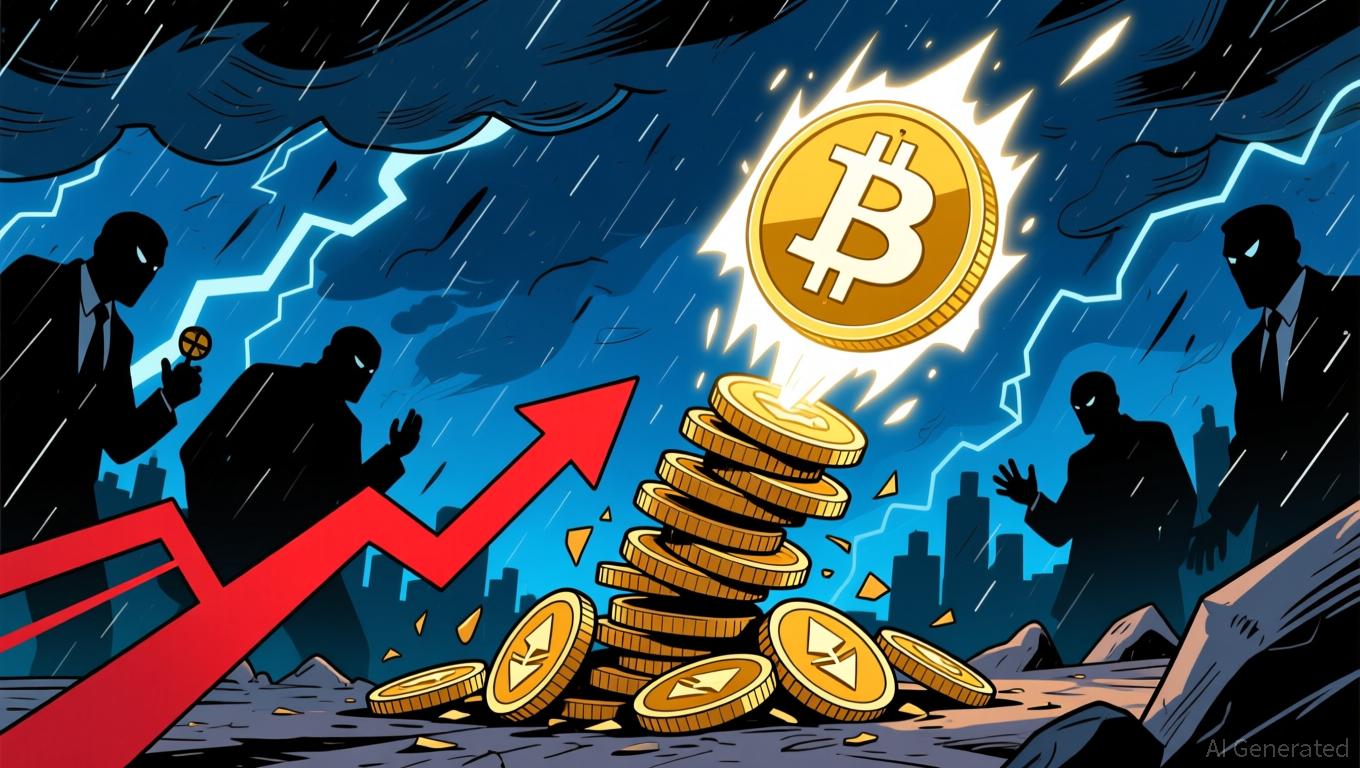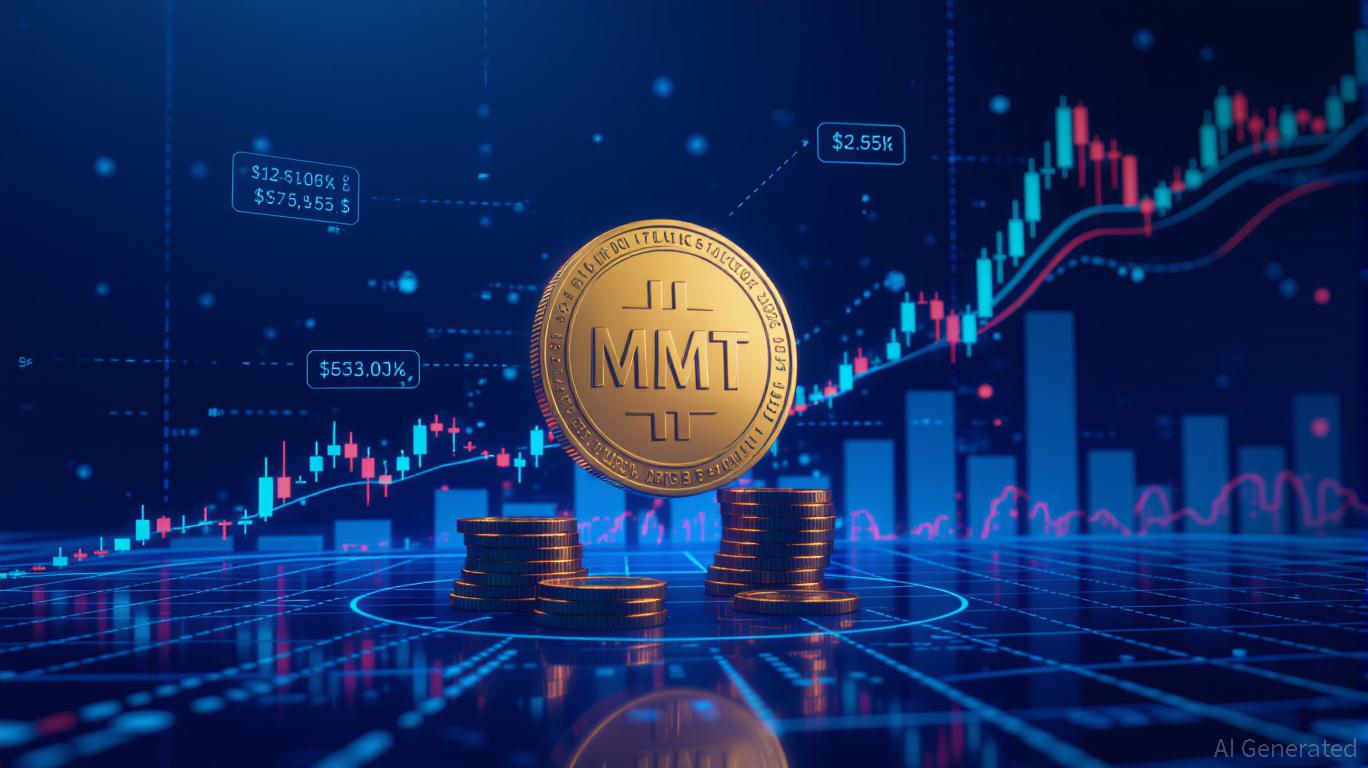Vitalik Buterin Advocates ZK-Solutions: Transforming Blockchain Performance
- Vitalik Buterin is pioneering a ZK-native Ethereum through modexp precompile removal and GKR protocol adoption, enhancing scalability and computational efficiency. - Institutional platforms like zkSync and Polygon zkEVM leverage ZK-SNARKs to achieve 43,000 TPS and $0.0001 transaction costs, while enterprises adopt ZKPs for supply chain transparency. - Academic research validates ZKPs for privacy-preserving credentials, aligning with Goldwasser et al.'s foundational work now deployed in finance and identi
Vitalik Buterin's Roadmap for a ZK-Centric Ethereum
Buterin’s latest initiatives highlight a clear shift toward making Ethereum inherently ZK-focused. Among his significant actions is the proposal to eliminate the modular exponentiation (modexp) precompile, a feature he originally introduced. Although this adjustment could lead to higher gas fees, it streamlines the process of generating proofs for zero-knowledge rollups, paving the way for quicker

In addition, Buterin is championing the GKR (Goldwasser-Kilian-Rothblum) protocol, a significant leap in computational verification. Unlike conventional zk-STARK solutions, GKR enables the validation of millions of computations per second without the need to verify each intermediate step,
Institutional Uptake and Academic Endorsement
The surge in ZK technology adoption extends beyond Ethereum’s developer community. Major institutions have embraced these advancements, with platforms such as zkSync Era and Polygon zkEVM utilizing ZK-SNARKs to provide scalable Layer 2 solutions. These initiatives have achieved transaction fees as low as $0.0001 and throughput rates surpassing 43,000 TPS,
Academic efforts are also crucial in establishing the credibility of ZK technology. Projects such as ZKBAR-V are investigating ZKP applications for privacy-preserving verification of academic credentials,
Market Endorsement and Scalability Indicators
The investment outlook for ZK-driven projects is reinforced by strong market data. In the third quarter of 2025, the Total Value Locked (TVL) in ZK rollups soared, with ZKsync reaching $3.3 billion and StarkNet’s TVL increasing by 200%
Investment patterns further underscore the strategic value of ZK technology. Polygon zkEVM has pledged $1 billion for ZKP integration, while projects such as Zero Knowledge Proof (ZKP) are gaining traction with novel auction mechanisms and hybrid zk-SNARK/zk-STARK frameworks
Strategic Investment Considerations
For those investing, the convergence of technological breakthroughs, institutional participation, and academic support positions ZK-oriented projects as compelling long-term opportunities. Buterin’s vision for a ZK-centric Ethereum is more than a technical enhancement—it represents a fundamental rethinking of blockchain’s place in global infrastructure. As ZK technology moves from specialized trials to widespread adoption, early participants are likely to benefit from both value appreciation and the mainstreaming of decentralized platforms.
Success will depend on selecting projects that embody this new direction. Initiatives focused on scalability, privacy, and interoperability—such as ZK rollups compatible with EVM or hybrid ZKP models—are expected to lead in the years ahead. With Buterin’s ongoing influence on Ethereum’s development, the ZK ecosystem is set to become a foundational layer for the future digital economy.
Disclaimer: The content of this article solely reflects the author's opinion and does not represent the platform in any capacity. This article is not intended to serve as a reference for making investment decisions.
You may also like
Bitcoin Updates: Tether's Unstable Backing and Bitcoin's Rally Intensify Liquidity Shortage
- Bitcoin's price surge triggered Tether (USDT) outflows, raising liquidity risks as reserves face S&P downgrade. - NYDIG reports $3.55B ETF outflows in November, linked to corporate trades and algorithmic stablecoin losses. - S&P cites 5.6% Bitcoin exposure in USDT reserves, exceeding overcollateralization buffers, risking undercollateralization. - Analysts warn of self-reinforcing cycles as Bitcoin rallies coincide with Tether redemptions, straining liquidity. - Tether's 24% high-risk assets in reserves

Global Exchanges Caution: Excluding Crypto May Undermine Market Fairness and Integrity
- Global exchanges urge SEC to reject broad crypto exemptions for tokenized stocks to prevent market integrity risks and unfair competition. - SEC considers sandbox framework for crypto pilots, but warned by WFE and SIFMA against creating parallel markets and eroding safeguards. - SIFMA highlights crypto market collapses, stressing that U.S. markets’ strength lies in regulated depth and liquidity, not speed. - Robinhood and Coinbase advance tokenized stock initiatives despite resistance from traditional ex

Reevaluating MMT After Quantitative Easing: Insights from the Latest Rise in MMT Price Forecasts and Their Implications for Market Outlook
- Post-QE markets show MMT's influence on digital assets, with MMT token surging 1,300% driven by Binance airdrops and institutional buying. - Q2 2025 saw fixed-income markets shift to traditional risk-return metrics as MMT's dominance waned amid normalized term premiums and higher debt compensation demands. - Investors rotated to small-cap/value equities and AI infrastructure amid fiscal stimulus, while elevated valuations emphasized diversification and fundamentals. - MMT remains relevant for sovereign f

AAVE +0.54% As Institutional Interest in Euro Stablecoins Continues to Rise
- Aave (AAVE) rose 0.54% in 24 hours to $186.75, reflecting growing institutional interest in EU stablecoin infrastructure. - Deutsche Börse plans to integrate EURAU stablecoin into its custody services, expanding digital-asset capabilities under MiCA regulations. - The move aligns with EU efforts to reduce reliance on U.S. stablecoins and promote euro-pegged alternatives through regulated frameworks. - Institutional adoption of stablecoins may indirectly benefit DeFi platforms like Aave by enhancing liqui
